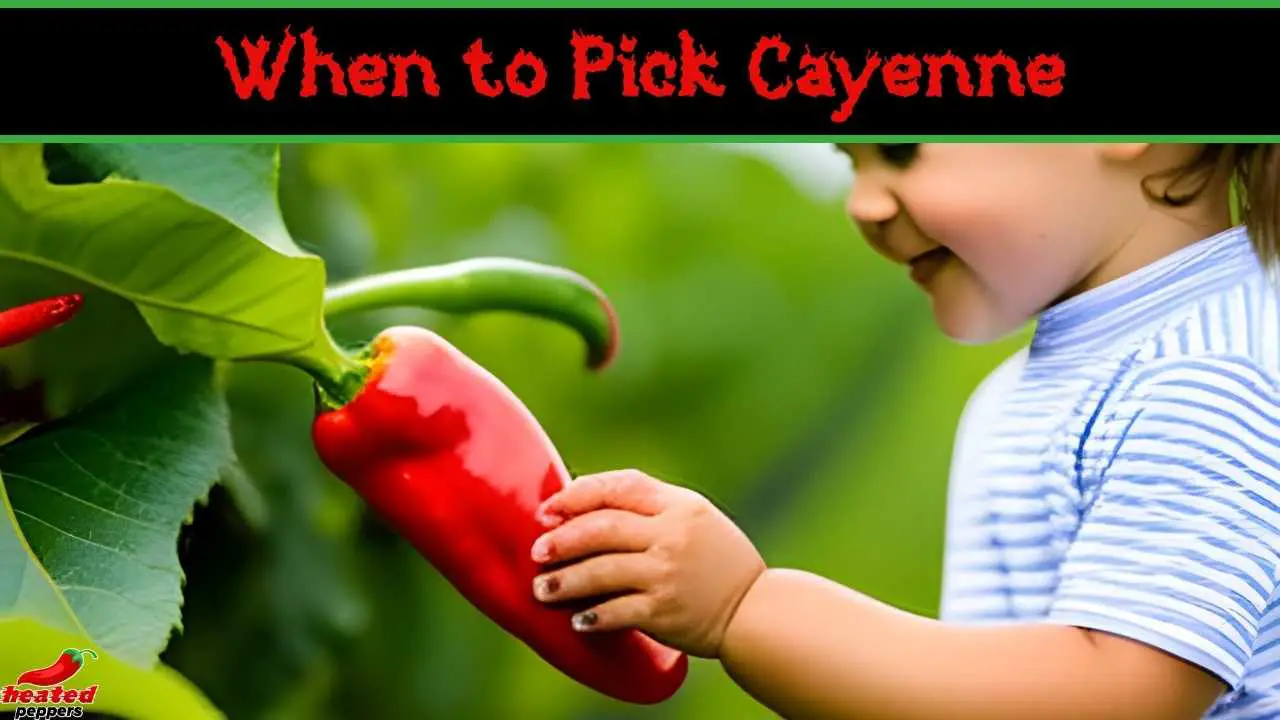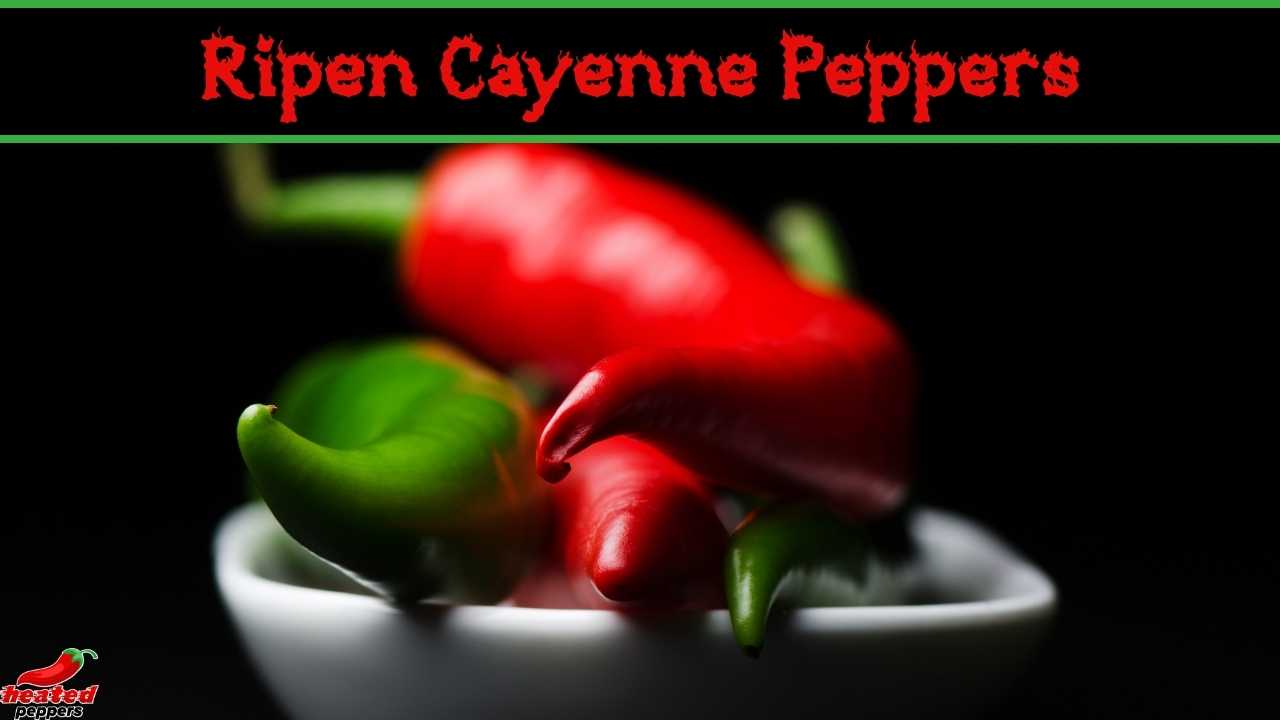Cayenne peppers are a staple ingredient in many cuisines around the world due to their unique taste and heat.
However, to fully enjoy the benefits of this versatile pepper, it is crucial to store them properly.
In this guide, we will explore the various methods of storing cayenne peppers, the dos and don’ts of proper storage, and how long they can last when stored correctly.
By following these tips, you can ensure that your cayenne peppers remain fresh, flavorful, and safe to consume.

Table of Contents
Why Does Cayenne Pepper Need To Be Stored Properly?
Cayenne pepper needs to be stored properly to maintain its vibrant color, heat, and flavor, and to prevent the growth of mold, bacteria, and fungi that can cause spoilage and make it unsafe to consume.
Improper storage can lead to loss of quality and the growth of harmful microorganisms, which can make the pepper unsafe to eat.
Should you Store Cayenne Peppers in an Airtight Container?
While storing cayenne peppers in an airtight container can be beneficial in some situations, such as freezing or keeping out humidity, it can also trap moisture and limit air circulation, which can promote mold growth.
If you are storing cayenne peppers in an airtight container, it is crucial to ensure that they are completely dry and free of moisture to prevent mold growth.
To avoid trapping moisture, it is recommended to use containers that allow some air circulation or to add moisture-absorbing packets like silica gel or food-safe desiccant.
These packets can help absorb excess moisture and prevent the growth of mold.
When freezing cayenne peppers, it is best to use airtight containers or freezer bags. Freezer burn can occur when moisture in the food evaporates and forms ice crystals on its surface, leading to a loss of quality and flavor.
Using airtight containers or freezer bags can help prevent freezer burn and preserve the flavor and quality of the peppers.
Common Storing Methods for Fresh Cayenne Peppers:
Refrigerate
While refrigerating fresh cayenne peppers may not be the best option, it can still be done if necessary.
However, keep in mind that refrigeration can cause the peppers to lose their crisp texture due to the cold and humid environment.
To refrigerate fresh cayenne peppers, place them in a paper or plastic bag, poke a few holes in the bag to allow for air circulation, and store them in the crisper drawer of the refrigerator.
Freezing
Freezing is an excellent way to preserve the flavor and heat of cayenne peppers.
To freeze fresh cayenne peppers, first, wash and dry them, then chop them into small pieces or leave them whole.
Place the peppers in airtight containers or freezer bags, label and date them, and store them in the freezer.
If you want a full guide to freezing cayenne peppers, click that link it will take you to the article I created just for you!
Salt Water Brine
Submerging whole cayenne peppers in a saltwater brine solution can preserve them and retain their texture, flavor, and heat while extending their shelf life.
You can store them in a cabinet if they have been sterilized correctly. Sterilization helps to kill off any harmful bacteria that may be present in the brine solution and prevent spoilage.
Here is how you do it:
- Combine 1 1/4 teaspoon of salt per 1 cup of water. (Heat up the water to help dissolve the salt)
- Place the cayenne peppers and any additional spices or flavorings you wish to use in a sterilized jar or container.
- Pour the brine solution over the peppers, and make sure they are completely submerged.
- Weigh down the peppers with a fermentation weight or anything you have at home.
- Wipe the rim of the jar with a clean, damp cloth, and then apply a fermenting lid that allows pressure to be released.
- Store in a cabinet for as long as you desire, a few days, a few months, or even over a year. Some people claim the longer the better.
It’s important to note that once the jar has been opened, the peppers should be refrigerated and used within a few weeks.
Drying
Drying is a popular method for preserving cayenne peppers. You can air-dry them by hanging them upside down in a dry and well-ventilated area, or you can use an oven or dehydrator.
Once the peppers are completely dry, you can store them whole, grind them into a powder, or turn them into flakes.
Store the dried peppers in airtight containers in a cool, dark place.
Pickling
Pickling involves submerging cayenne peppers in a vinegar-based solution with spices. This method preserves their flavor and adds a tangy taste.
To make a pickling solution, combine vinegar, water, salt, and sugar in a pot and bring to a boil.
Add the peppers and spices of your choice, then let cool to room temperature.
Store the peppers and the pickling solution in an airtight container in the refrigerator,
If sterilized properly, pickled cayenne peppers may be stored at room temperature but I personally wouldn’t risk it.
If you want a more in-depth guide to pickling cayenne peppers, as well as some tips and things to avoid, check out my awesome guide to pickling cayenne peppers, it’s a great read if you are into that!
Olive Oil
First, you need to make sure the cayenne peppers are completely dry, as any moisture can cause mold growth or spoilage.
Then, place the peppers in a jar and fill the jar with olive oil, making sure that the peppers are fully submerged.
The olive oil acts as a natural preservative, creating a barrier between the peppers and air, which helps prevent spoilage.
The high acidity level in the peppers makes them a perfect candidate for this method since they will not spoil easily when submerged in oil.
Also, the capsaicin in cayenne peppers gives them their signature heat, which can be infused into the oil, giving it a spicy kick.
How To Store Chopped Cayenne Peppers
Storing whole, fresh cayenne peppers in the fridge is generally not recommended, as the cold and humid environment can cause them to lose their crisp texture.
However, if you have chopped cayenne peppers or if the peppers are starting to show signs of spoilage, you can store them in the fridge for a short period to slow down further deterioration.
How To Store Cooked Cayenne Peppers
For cooked cayenne peppers, you can store them in an airtight container in the refrigerator. This will help preserve their freshness and flavor for up to 4 days.
Storing cooked cayenne peppers in airtight containers helps prevent them from absorbing odors from other foods in the fridge and keeps them from drying out or becoming contaminated.
For longer storage, freeze the cooked peppers in freezer-safe containers or bags.
What NOT to do When Storing Cayenne Peppers
- Avoid washing them: Washing cayenne peppers before storage introduces moisture, which can lead to mold growth and rotting. Instead, gently brush off any dirt or debris with a dry cloth.
- Avoid storing in direct sunlight or high temperatures: Exposure to direct sunlight or high temperatures can cause cayenne peppers to lose their vibrant color, flavor, and heat. Store them in a cool, dark place, such as a pantry or cupboard, away from direct sunlight and heat sources.
- Do not store near ethylene-producing fruits: Some fruits, like apples and bananas, emit ethylene gas, which can hasten the ripening and eventual spoilage of cayenne peppers. Keep them separate from ethylene-producing fruits to extend their shelf life.
- Avoid storing with damp or moldy produce: Storing cayenne peppers with damp or moldy produce can contaminate them and shorten their shelf life. Make sure to remove any spoiled or wet produce from the storage area and always keep cayenne peppers in a dry and clean environment.
- Avoid refrigerating fresh cayenne peppers: Storing fresh cayenne peppers in the refrigerator can cause them to become soft and lose their crisp texture due to the cold and humid environment. Instead, store them at room temperature in a cool, dark place.
- Do not store near strong-smelling foods: Cayenne peppers can absorb odors from other foods, which can affect their flavor. Keep them away from strong-smelling foods, like onions or garlic, to preserve their natural taste.
- Avoid overcrowding: When storing cayenne peppers, ensure they have enough space and are not overcrowded. This allows for better air circulation and reduces the chances of mold growth or rotting due to trapped moisture.
- Do not store cut or damaged peppers: Cut or damaged cayenne peppers are more susceptible to bacterial and fungal growth. Always store whole, unblemished peppers and use any damaged or cut peppers immediately.
Can I Store Peppers At Room Temperature?
Whole, fresh cayenne peppers can be stored at room temperature for a short period if they are properly stored in a cool, dark place.
Ideally, the temperature of the storage area should be between 50-70°F (10-21°C), which is cooler than typical room temperature, but not as cold as a refrigerator.
It’s important to store the peppers in a well-ventilated container that allows air circulation, such as a mesh bag or a paper bag with holes.
This helps to prevent moisture buildup, which can lead to mold growth and spoilage.
When storing peppers at room temperature, it’s important to inspect them regularly for signs of spoilage, such as soft spots, mold, or discoloration.
If you notice any signs of spoilage, discard the affected peppers immediately to prevent the spread of bacteria.
It’s worth noting that storing peppers at room temperature is not as effective for long-term storage as other methods, such as freezing or pickling.
If you need to store peppers for an extended period, it’s recommended to use one of these preservation methods to ensure their quality and safety.
How Long Will My Peppers Last When Stored Properly?
I have a full guide explaining in detail when cayenne peppers expire and how long they last, click that link if you’re interested, otherwise, here is the jist of it:
- Fresh cayenne peppers stored at room temperature can last for up to 2 weeks.
- Refrigerated chopped cayenne peppers can last for a few days.
- Frozen cayenne peppers can last up to a year.
- Dried cayenne peppers can last up to 2-3 years if stored in a cool, dark place in an airtight container with a moisture-absorbing packet.
- Pickled cayenne peppers can last for 1-2 years if sealed tight and several months if kept refrigerated after opening.
- Cayenne peppers stored in olive oil can last for several months.
Conclusion
Proper storage of cayenne peppers is crucial to maintain their flavor, heat, and quality while preventing the growth of mold, bacteria, and fungi.
There are various storage methods to choose from, such as freezing, drying, pickling, and submerging in a saltwater brine solution or olive oil.
Remember to avoid common storage mistakes like washing the peppers, storing in direct sunlight or high temperatures, overcrowding, and storing with damp or moldy produce.
By following these tips, you can enjoy the vibrant taste and heat of cayenne peppers for an extended period.





